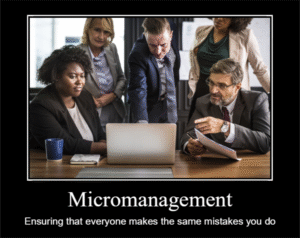There are few things as baffling as realising that some office dynamics feel eerily similar to the drama/politics of high school. The only difference now is instead of sports arenas and classrooms, it’s Slack channels and staff meetings. But the essence is the same: a few people band together, wielding unspoken power, while others try to figure out where they stand or worse, if they stand anywhere at all. If you have ever found yourself wondering why a particular group in your office always seems to have the inside scoop, the best projects, or the manager’s ear, you’ve probably encountered a workplace clique.
Cliques in the workplace are not just social annoyances, they have real consequences for collaboration, innovation, and overall employee well-being. They can determine who thrives and who merely survives in a professional environment. But like most things in human relationships, it’s not all black and white. Let’s unpack this complex issue and find out how to navigate it with grace and clarity.
What Are Workplace Cliques?
In a nutshell, workplace cliques are tight-knit groups of employees who interact almost exclusively with each other and often create an unspoken boundary between themselves and others. These are the teams who always eat lunch together, share inside jokes, and back each other up in meetings—even when they’re wrong.
Unlike healthy friendships or collaborations, cliques tend to be more exclusive than inclusive. They create a social hierarchy within an organisation, often isolating those who don’t belong or conform. This exclusivity can lead to resentment, miscommunication, and even reduced productivity among broader teams.
Why Do People Form Cliques?
At its core, the formation of cliques is not inherently malicious—it’s a deeply human instinct. People are naturally drawn to others who reflect parts of themselves. Whether it’s a shared hometown, mutual hobbies, a similar sense of humor, or even a collective frustration about a difficult client, these connections can feel like small lifelines in the often turbulent sea of workplace demands. In high-pressure environments, the comfort of familiarity offers a form of psychological safety. We want to feel like we belong somewhere, and cliques can offer that—at least initially.
But there’s a fine line between connection and exclusion.
What often begins as innocent camaraderie—lunchtime chats, inside jokes, or shared Slack threads—can slowly morph into exclusivity. When the circle closes in on itself, becoming more about who’s in and who’s not, that’s when a healthy bond begins to feel more like a social stronghold. People outside the clique might start to feel invisible, uninvited, or even inferior, despite being just as capable and committed.
Cliques tend to form around several patterns:
- Shared tenure: Employees who have “been there from the beginning” may form an unspoken alliance. There’s a sense of loyalty and shared history, and often, an undercurrent of territoriality. They remember the “old ways” and might resist new input, unintentionally excluding newer employees who haven’t earned their stripes yet.
- Departmental silos: Teams like marketing, engineering, or sales often operate within their own bubbles. While that’s understandable in terms of workflow, it becomes a problem when cross-functional collaboration suffers. Instead of sharing knowledge or celebrating collective wins, teams become competitive, guarded, and even dismissive of others’ contributions.
- Similar personalities and work styles: Type-A personalities might gravitate toward one another, just as introverts might form quieter bonds. Even preferred ways of working, for example, remote vs. in-office, casual vs. highly structured etc, can create subtle but powerful groupings that influence who gets heard, seen, or considered for opportunities.
Beyond these natural tendencies, cliques often thrive in environments where leadership is passive or reactive. When managers fail to nurture an inclusive and respectful culture, these groups fill the void. Without clear expectations around collaboration and communication, cliques define their own rules of engagement—often to the detriment of team morale. Left unchecked, they can become entrenched in the organisation’s DNA, influencing everything from project assignments to office politics.
And once embedded, cliques are not easily dismantled. They’re held together not just by shared experience but by power dynamics—who gets access, who gets visibility, and ultimately, who gets ahead. This makes addressing them not just a social issue, but a structural one. A clique might seem harmless on the surface, but beneath it can lie a network of gatekeeping, favoritism, and subtle exclusion that chips away at team cohesion.
So while the instinct to connect is normal, the real issue arises when these connections become exclusive fortresses rather than bridges. And that’s where organisations and individuals must pause and reflect: Are our social bonds building a stronger team, or are they creating invisible walls?

How to Identify a Workplace Clique
Sometimes it’s subtle. Other times, it’s glaring. You can tell there’s a clique when:
- A certain group of people always socialise together, both in and out of work.
- They dominate meetings or steer decisions in a way that sidelines others.
- Communication becomes selective—key information only circulates within that group.
- Feedback and opportunities circulate in loops, excluding broader team input.
You might also notice non-members second-guessing themselves more, withdrawing from participation, or questioning their own value.
Why Are People Attracted to Cliques?
We all crave belonging. In a professional setting where competition, pressure, and uncertainty are common, cliques offer a sense of identity and protection. They provide:
- Social security: Knowing someone has your back is comforting.
- Influence: Being in the “in-group” can mean greater access to information and decision-making power.
- Validation: It feels good to be seen, heard, and supported.
For some, it’s a strategic career move. Aligning with a powerful group might mean more visibility and opportunities. But what many forget is that the very walls that protect also limit your growth and perspective.
Are Workplace Cliques Good or Bad?
Let’s be fair, not every clique is toxic. Sometimes, close-knit teams fuel productivity, generate fresh ideas, and support each other through tough projects. In the best-case scenario, a group’s strong bond can elevate the quality of work and morale.
Positive effects of workplace cliques:
- Enhanced trust and collaboration within the group.
- Emotional support during high-stress periods.
- A strong sense of identity and purpose.
But and it’s a big but—problems arise when these groups prioritise loyalty over fairness, or camaraderie over inclusivity.
Negative effects of workplace cliques:
- Exclusion of others: One of the most immediate consequences is the exclusion of others. When decision-making, brainstorming, or even casual conversations become confined to a tight-knit group, it sends an unspoken message: “Your voice doesn’t matter here.” Great ideas often go unheard—not because they lack merit, but because they come from someone outside the social circle.
- Stifled innovation: Innovation, which thrives on diversity of thought, gets stifled. If everyone in the room thinks the same way and validates each other’s opinions without challenge, there’s little room for breakthroughs. The team begins to solve old problems with the same tired solutions, not because they can’t do better, but because they’re not hearing anything new. Over time, this creates an echo chamber, where only similar perspectives are entertained.
- Increased conflict: Cliques can divide departments and escalate misunderstanding. Tensions rise when one group hoards opportunities or dismisses the contributions of others.
- Damaged morale: Isolation and favoritism lead to resentment, disengagement, and high turnover.
If a clique dominates leadership decisions, it can create a culture where merit takes a backseat to popularity—pushing talented individuals to feel invisible.
The Impact on Collaboration and Innovation
Workplaces thrive when diverse ideas and voices collide respectfully. When cliques gatekeep creativity or control narratives, the larger team suffers. Collaborative projects become tense. People second-guess contributions. Innovation stalls because the same voices keep echoing the same opinions.
The true cost is not just emotional; it’s operational. Miscommunication, disengagement, and a lack of diversity in ideas can all derail business goals.
Employee Well-Being in a Clique-Heavy Workplace
Being excluded or even just feeling like you are, can lead to chronic stress. That subtle unease when you’re not invited to lunch or left out of the loop builds over time. It can affect confidence, job satisfaction, and even health.
Employees who feel marginalized may:
- Stop speaking up in meetings.
- Miss out on mentorship or growth opportunities.
- Experience burnout or emotional exhaustion.
On the flip side, even clique members might feel pressure to conform or maintain appearances, fearing they’ll fall out of favour with others.
How to Handle Workplace Cliques Gracefully
Dealing with cliques is tricky because it involves people’s emotions and identities. But with intention and awareness, it’s entirely possible to navigate them with grace.
If you’re a manager, your influence sets the tone for the entire team. Use it wisely
- Foster team-wide bonding by mixing up groups on projects, encouraging cross-functional collaboration, and creating opportunities for different people to work together. It breaks down silos and helps people see each other as more than their department labels.
- Watch for signs of exclusion and address them early. Cliques often start subtly, the sooner you notice and gently address these patterns, the easier they are to redirect.
- Reward collaboration and inclusivity in performance reviews.
- Set clear expectations for communication and team behavior.
If you’re an employee, your influence is quieter but just as powerful.
- Build relationships across different departments and levels.
- Be inclusive—invite others into conversations, lunch breaks, or brainstorming sessions.
- Stay professional, even if you feel excluded. It’s hard, but reacting emotionally or retaliating will only reinforce the divisions. Instead, stay grounded, focused on your goals, and keep being kind—you never know who’s quietly watching and appreciating your approach.
- Document behaviours if the clique becomes harmful and raise your concerns respectfully through the proper channels.
And if you find yourself in a clique, it’s okay, we all gravitate toward comfort zones. Just be mindful. Ask yourself: Are we building bridges or walls? Sometimes the smallest shift in awareness is all it takes to turn a clique into a community.
A Personal Note
Personally, I’ve felt the sting of exclusion more deeply than I ever expected, especially when I worked in a place where the local language wasn’t mine. It wasn’t anyone’s fault, really. Conversations would flow in the shared language, jokes would bounce across the room, and I’d be sitting there smiling politely, missing the punchline entirely. Over time, that language barrier became more than just about words—it became an invisible wall that kept me on the outside, no matter how qualified or willing I was to contribute.
But I’ve also been part of a close-knit team where I felt seen, supported, and safe. And that contrast taught me something important: cliques don’t always start with malice. Sometimes, they’re just comfort zones that go unchecked. But sustaining exclusivity—whether through language, culture, or habits—is a choice. One we make daily in how we include, invite, and acknowledge others.
What I’ve learned is this: connection should never come at the cost of inclusion. We all thrive when we feel like we belong, and we all have the power to shift the energy around us—one invitation, one shared conversation, one open door at a time.
The goal isn’t to police friendships or ban tight-knit relationships. The goal is to foster a workplace culture where everyone feels seen, valued, and heard. When we’re intentional about how we connect, we don’t just create better teams—we create workplaces people want to stay in.
Cliques are human. But so is empathy, communication, and the ability to grow beyond our comfort zones.
Work shouldn’t feel like high school. It should feel like progress. No one wants to feel like their career is limited not by their ability, but by their seating arrangement at lunch.
How have cliques shown up in your work life, and how did you navigate them? Share your thoughts in the comments—your perspective might be exactly what someone else needs to read today.
Stay frosty.
Further reading – Workplace Cliques





